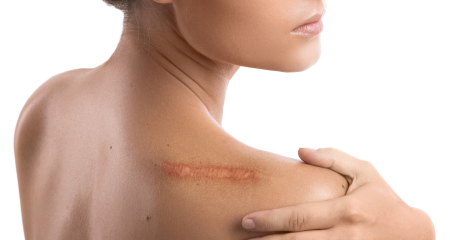
At Northstar Dermatology, our specialists are highly experienced in treating and removing keloid scars. Keloids are raised or textured scars that may form lumps, ridges, or nodules on the skin. Some keloids can become tender, itchy, or painful, making treatment or removal a beneficial option. To learn more about treatment options for keloid scars, reach out to our office today.
A keloid scar is an overgrowth of scar tissue that can develop following a surgical procedure, piercing, or skin injury. Although keloid scars can affect anyone, they are more commonly seen in individuals with darker skin tones. While keloids are not harmful, they can sometimes become uncomfortable or painful, and in some cases, grow large enough to impact appearance.
Keloid scars are frequently treated with steroid injections to reduce inflammation and gradually shrink the scar’s size. Typically, multiple sessions are needed to achieve the best results. In cases where the keloid doesn’t respond to corticosteroids, other injectable medications may be considered. Keloids can also be surgically removed; however, they may recur following surgery due to the skin’s response to trauma. To minimize the chances of recurrence, your dermatologist may recommend a series of post-surgical steroid injections.
For more information on keloid treatment options, contact our office today.
